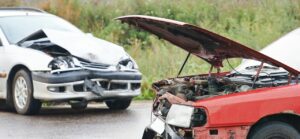Spinal Cord Compression v. Abutment After a Car Accident

From time to time, we will be posting information regarding common injuries that our clients sustain from automobile accidents. Many of these medical terms you may not have ever heard of before. We hope to not only represent our clients, but also educate them on all aspects of their case.
What is the difference between spinal cord compression and spinal cord abutment? When a space-occupying lesion (something that doesn’t belong in a space, i.e., splinter, bullet or tumor), in the form of a herniated disc (by definition always from trauma) goes beyond the borders of the disc/vertebrate into the spinal canal, it can touch and/or push the spinal cord. If it pushes the spinal cord against the back of the spinal canal in a “pincer” fashion with pressure both in front and back of the spinal cord, this is a cord compression. When the herniated disc simply touches, or is against the spinal cord leaving space behind the spinal cord, this is a cord abutment. The difference is dramatic in symptomatology and necessity for treatment where the cord compression is a much more serious condition, often necessitating surgery.







